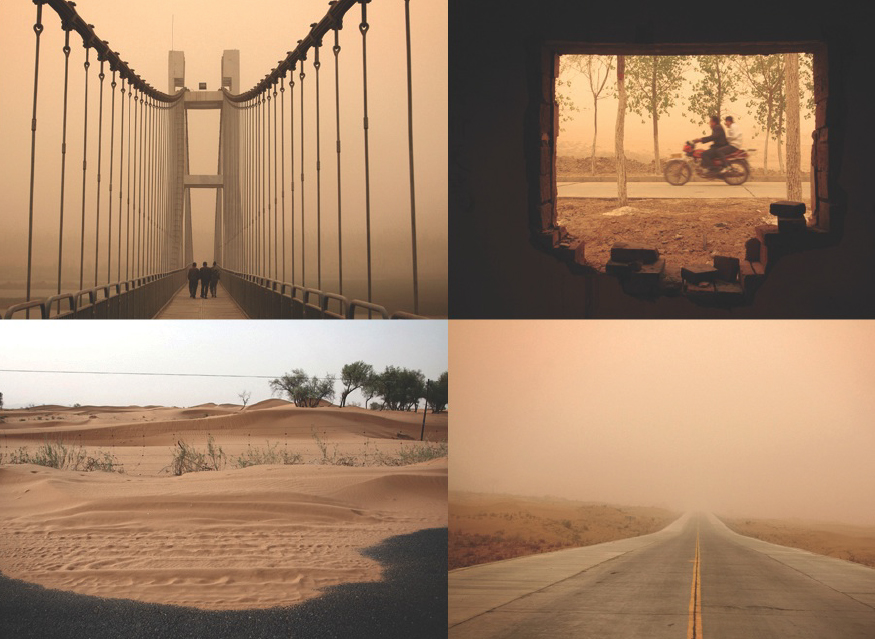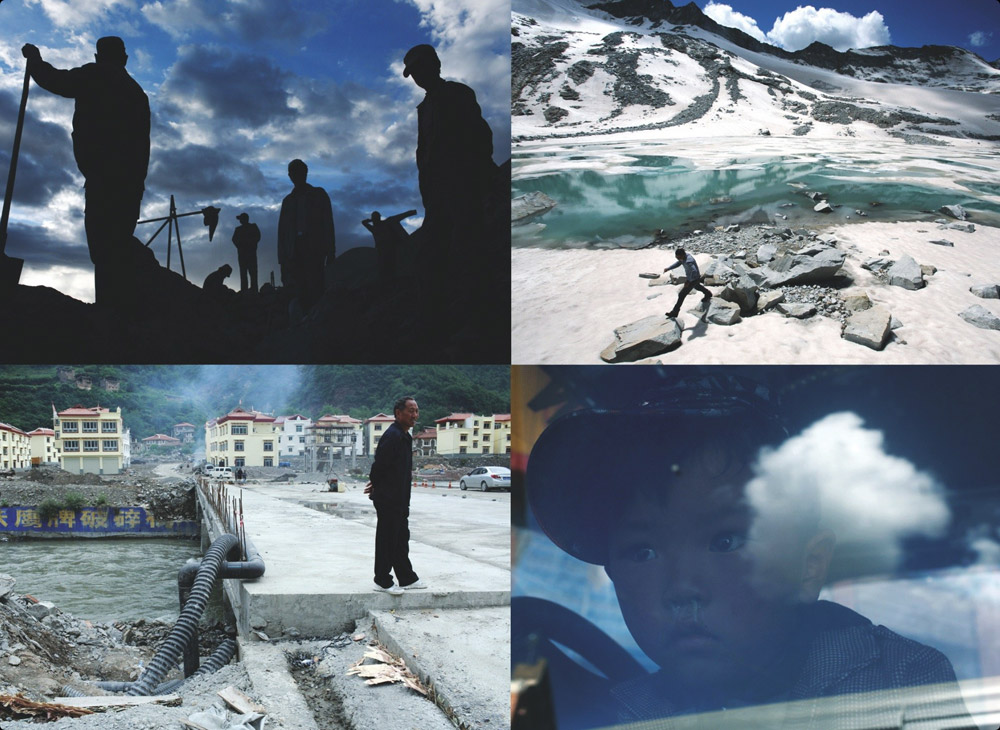-
China’s Environmental Crisis Through the Lens: Interview With Photojournalist Sean Gallagher
September 24, 2013 By Susan Chan ShifflettChina is one of the world’s 12 “mega-biodiversity” countries, but its incredible natural landscapes, from Sichuan’s sparkling, turquoise-colored lakes to Guilin’s dramatic karst topography, are bearing the cost of rapid economic development, writes British environmental photojournalist and videographer Sean Gallagher in a new multimedia e-book.
Meltdown: China’s Environmental Crisis, published by the Pulitzer Center on Crisis Reporting and available for free, is a visually rich travelogue that brings the reader on Gallagher’s travels to some of China’s most remote areas through photos, videos, maps, interviews, and handwritten notations. The book consists of four chapters documenting how the landscape is being fundamentally altered and the resulting effects on species and communities.
Although the book’s title suggests an alarmist characterization of China’s environmental future, Gallagher provides a refreshingly balanced and holistic coverage of the interplay between China’s environment, economic development, and various cultures. Through the 62-page travelogue, the Beijing-based photojournalist pairs visuals with first-person accounts and substantive analysis of how an ensemble of pressures – including climate change, industrialization, and urbanization – is impacting the country.
The reader comes away with a newfound appreciation for China’s incredible biodiversity and the challenge, driven by ambitious development goals, of preserving it.
The China Environment Forum interviewed Sean Gallagher via email to better understand the process of reporting on these issues from behind a lens:
China Environment Forum: How did you become interested in environmental photojournalism in China and ultimately decide to base yourself in Beijing?
Sean Gallagher: I first learned of the severity of China’s environmental problems when I read the book, The River Runs Black, by Elizabeth C. Economy. At that time, I was undertaking a photojournalism internship in London. At the end of the internship I was awarded a grant to help fund my first professional project. I decided to go to China and start to work on some of the issues I had read about. I was also influenced by the fact that my father had been travelling to China, with his work in international trade, since the 1980s. After my initial trip in 2005, I decided to move to Beijing and use it as my base for covering environmental issues in Asia.
CEF: How did you decide on Meltdown’s four themes: wetlands, forests, desertification, and the Tibetan plateau?
SG: I have been lucky enough to receive four grants from the Pulitzer Center on Crisis Reporting and the four chapters in the book correspond to the projects that they sponsored.
The first project, in 2009, was a 4,000 kilometer overland journey from Beijing to the western borders with Pakistan, documenting desertification across the country. After completing this project, I began to look into what other water-related issues I could cover in China. That led me to the crisis that surrounds the country’s wetlands, which I documented in a six-province trip in 2010.
Having covered desert and wetland ecosystems, the next logical choice was to look at the country’s forests and the issues affecting them, which brought me to Sichuan province in 2011. Having covered these three main ecosystems, I felt I needed to travel to the Tibetan Plateau to complete the story and ensure I had covered all of the country’s major ecosystems.
CEF: How do you think that your background in zoology has impacted your work?
SG: I have always had an interest in the natural world and science, ever since I was a child.
I believe my educational background in biology has helped me greatly in approaching my chosen subjects. Training in the scientific method teaches you to approach a subject without bias or preconceptions. You try to discover what the facts are and then report what you find accurately and without spin.
In covering environmental issues in China, it is impossible to ignore the impacts on biodiversity, especially on species such as the Giant Panda. At first I was hesitant about reporting on the Giant Panda, as it seemed too obvious. I found however that it was a good way to get people’s attention and tell them about other species that are also severely threatened, such as the Yangtze Alligator and the Red Crown Crane.
CEF: In what ways do you think that a multimedia travelogue can impact a reader that traditional photojournalism cannot?
SG: We are in very exciting times in the media world because technology has allowed us to bring together multiple forms of storytelling in new and exciting packages.
For example, when I am in the field shooting, I am able to take photos, shoot video, and record audio all with high-quality equipment that is able to fit in my backpack. I can then bring together all of these different media into an interactive package, such as an e-book, that allows the viewer to see photos and videos, hear the words of my subjects, and interact with me and the story though social media.
Meltdown does exactly this. We have brought all of these multimedia elements together and presented them in a package that wouldn’t have been possible until recently. The layout of the book encourages the reader to follow me through my journeys via numerous interactive maps and provides insights into my thought processes and experiences while covering the issues. We hope this deepens the interest for our readers in the overall project.
CEF: You take a beautiful series of pictures of nomads in the Tibetan Plateau and also scenes from Inner Mongolia where you have been able to document people inside their homes. How long do you spend in a community before you start to take photos? Are they reluctant or open to being documented?
SG: Most people I photograph on my travels are more than happy to have their picture taken. In most instances I try to spend time in a community, sometimes up to a week or two, in length. When I meet someone, I try to strike up a conversation first and then ask if I can take an image. If I do not speak the local language, I have to gauge through body language if a person is comfortable with having their photo taken. It’s actually quite a subtle art to be able to connect with a person and make them feel comfortable enough for you to photograph them. The key is to appear warm, confident, and non-threatening.
CEF: In the book you mention raising awareness, domestically and internationally, is pivotal for China’s environmental future. What role do you think that photojournalists, and particularly Chinese environmental photojournalists, can play in this?
SG: As a photojournalist concerned about environmental issues, I believe my role is to vividly communicate the reality of the crises we currently face through photography and video. This means I have to travel to some of the worst affected areas in order to tell these stories and put a face to the issues and the people who are being affected the most.
There are a number of Chinese photojournalists who also work on environmental issues. Their work is very important as they often have a unique viewpoint and can immerse themselves in communities where it might be more difficult for Western photojournalists, especially when covering politically sensitive issues.
I always encourage viewers and readers of my work to explore the work of other photographers, journalists, media, etc. who are covering these issues. More importantly, I suggest people read as much of the popular science literature as possible and news from NGOs who are not influenced by outside parties.
Ultimately, however, all sectors of society, including government, scientists, media, NGOs, businesses, etc., are responsible for working together to protect the environment. I am just one part of the movement towards finding a sustainable future for protecting our environment as societies develop and grow.
CEF: You end Meltdown with a cautiously optimistic view of China’s environmental future. What allows you to stay hopeful?
SG: I’m not sure what keeps me optimistic. I have seen scenes in China, and in other countries in Asia, that have shocked and saddened me. We are having a profound impact on the natural world and have clearly not yet found a way to live in a sustainable balance with the earth.
In many ways, this imbalance is beginning to catch up with us, economically and in the form of direct health consequences. When these two things are affected, people usually start to take notice.
The prospect of a drastically changing climate also looms over us, as we enter a time of unknown consequences.
I have to keep trying to show people what we are doing to our natural world and tell the stories of those communities and ecosystems being affected the most.
Photo Credit: Used with permission courtesy of Sean Gallagher.
 A Publication of the Stimson Center.
A Publication of the Stimson Center.







